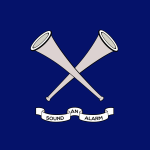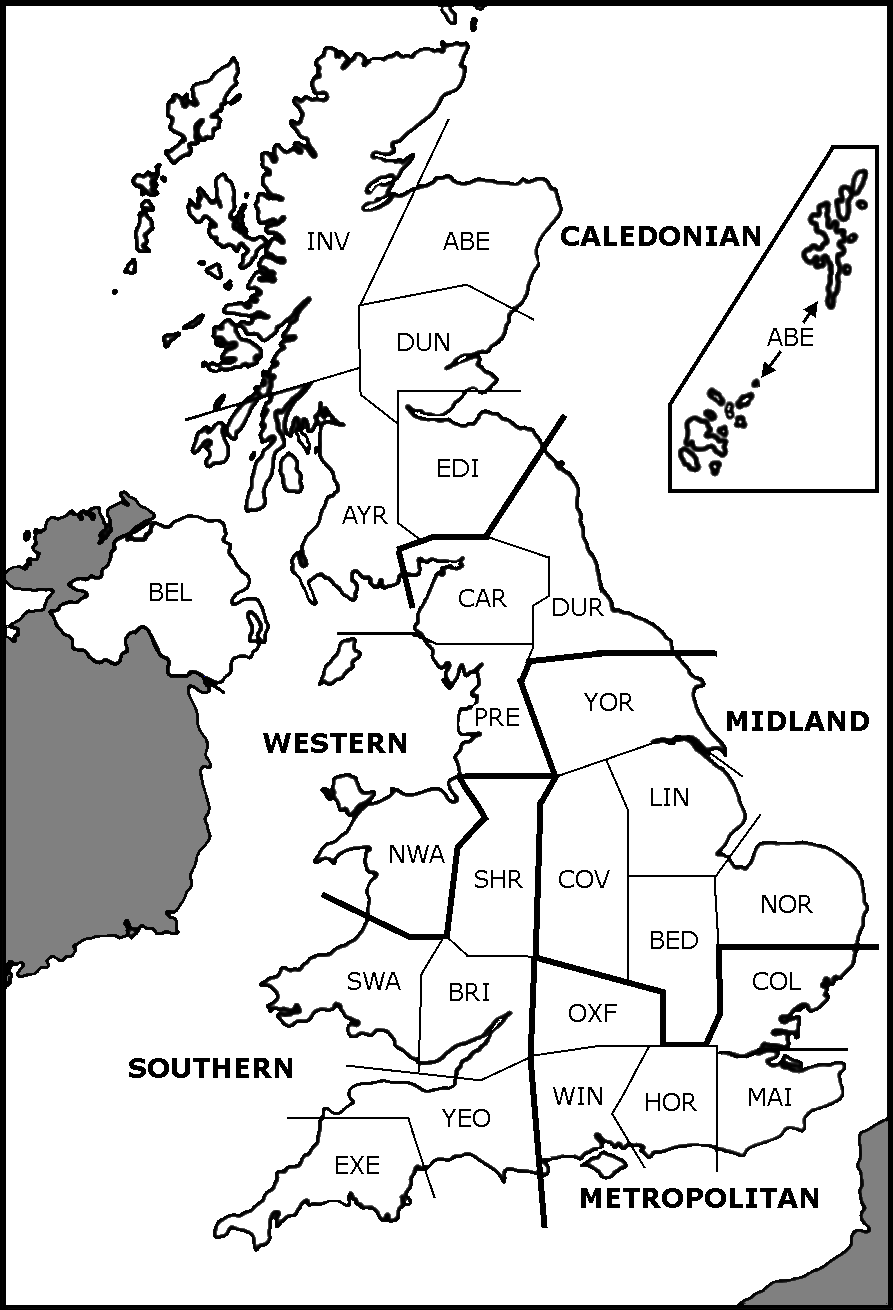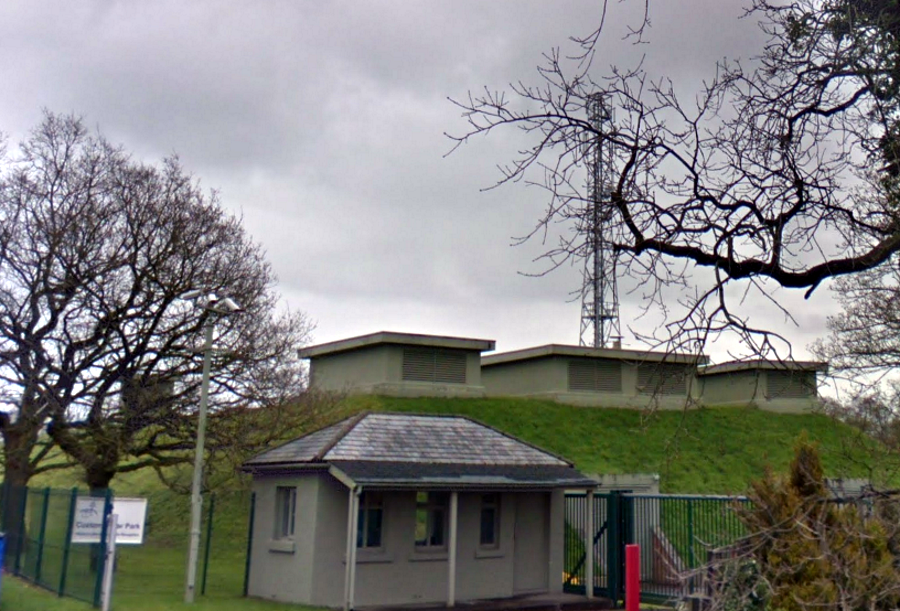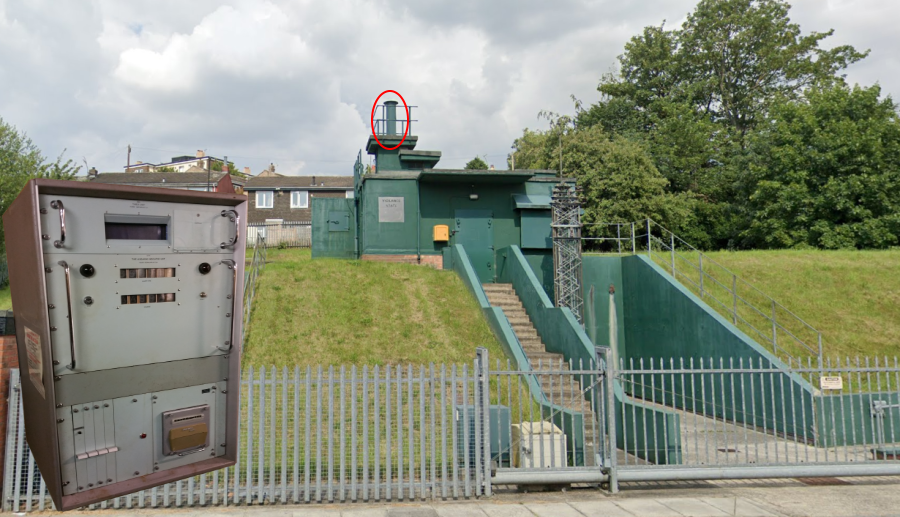United Kingdom Warning and Monitoring Organisation
The United Kingdom Warning and Monitoring Organisation (UKWMO) operated between 1957 and 1992 to provide UK military and civilian authorities with data on nuclear explosions and forecasts of fallout across the country in the event of nuclear war. In the event of war it had five main functions. These were:- Warning the public of any air attack.
- Providing confirmation of nuclear strike.
- Warning the public of the approach of radioactive fall-out.
- Supplying the civilian and military authorities in the United Kingdom and neighbouring countries in NATO with details of nuclear bursts and with a scientific assessment of the path and intensity of fall-out.
- Provision of a post-attack meteorological service.
The UKWMO was established in 1957, and funded by the Home Office but mainly utilised Royal Observer Corps (ROC) premises and its uniformed volunteer personnel as the field force. The only time the combined organisations were on high alert in the Cold War was during the Cuban Missile Crisis in October and November 1962. The organisation was wound up and disbanded in November 1992 following a review prompted by the government's Options for Change report (about halfway down).
Information of an impending air attack on the country would have come from a number of sources, including North America, NATO, and RAF Sector Operations Centres. In the main, however, warning of such attacks would come from the UK/USA Ballistic Missile Early Warning System BMEWS in England, (the site is now upgraded and still operational at RAF Fylingdales, on the North York Moors) and disseminated through UKRAOC (UK Regional Air Operations Centre) - based at RAF High Wycombe to the carrier warning system, backed up by further information from other points of the system in Alaska and Greenland. This was commonly, and slightly erroneously, known as the four minute warning. Warning of bomber attack would have come via UK and other NATO radar stations.
The Headquarters of the UKWMO was located in a converted barracks building in James Wolfe Road, Cowley, Oxfordshire, and was headed by a Director and Deputy Director supported by a small administrative staff. Co-located with HQ-UKWMO was the Headquarters of No 3 Oxford Group Royal Observer Corps. Five professional Sector Controllers and five Assistant Sector Controllers were co-located at the five Royal Observer Corps area headquarters.
At each of the twenty five ROC group controls the UKWMO was represented by volunteers and specially trained members. In the event of war the senior UKWMO volunteer present would command the group as Group Controller. Assessing the nuclear burst and fallout information and data provided by the ROC was a team of ten or more Warning Officers led by a Chief Warning Officer.
The members of the warning team were recruited from mainly local secondary school science teachers, or commercial engineers and technicians with a scientific education and background.
The Director UKWMO would be located at the United Kingdom Regional Air Operations Command (UK RAOC) within Strike Command's Operations Centre nuclear bunker at RAF High Wycombe to instigate what is commonly known as the four minute warning. The Deputy Director would be located at a standby UK RAOC at Goosnargh, Lancashire, within the UKWMO Western Sector nuclear bunker. Warnings would have been instantly distributed around the country by the Warning Broadcast System via 250 Carrier Control Points located at major police headquarters and 17,000 WB400 (later WB1400) carrier receivers in armed forces headquarters, hospitals, post offices, ROC posts and private homes in remote rural areas where hand operated sirens replaced the power sirens in the urban towns.
Spare time warning team members were activated, through a telephone calling card procedure, by whole-time Royal Observer Corps officers located at the twenty five group headquarters. All ROC telephone lines and the warning broadcast system were protected by the Government Telephone Preference Scheme that kept the lines active when the general public's system would be suspended under wartime regulations. The lines were generally routed separately from exchange to exchange and maintained by special teams of GPO workers using vans that did not have the markings of the Area Manager.
A major update of equipment was undertaken in the 1980s to bring the UKWMO up to date. Modern detection instruments, including the PDRM82 and PDRM82F, were provided to the ROC together with an improved Atomic Weapons Detection Recognition and Estimation of Yield (AWDREY) equipment. WB1400 Carrier Control Point Updated warning equipment was installed in most government buildings, nuclear bunkers, armed forces HQs, police and fire stations and also in private houses and pubs in remote areas, replacing the WB400. Two hundred major police stations were used as the area control points for power operated sirens, so these were equipped with new WB1400 carrier control warning equipment. If a warning was received then the police could operate the sirens via remote control, the carrier warning signal did not automatically operate the warning sirens (many of which were those used in the Second World War). Some sirens could be controlled automatically. Between 1985 and 1990 all communications links used by the warning system, the UKWMO and the ROC were upgraded and EMP hardened. Point to point SX2000 automated telephone exchanges were installed in ROC headquarters and old fashioned teleprinter equipment was replaced with modern computerised message switching equipment. For details of the communications systems visit: http://www.ringbell.co.uk/ukwmo/index.htm
UKWMO personnel undertook specialist residential training at the Emergency Planning College at Easingwold in Yorkshire. Easingwold had been a Home Office Civil Defence Training School. Several major war simulation exercises were held each year two WARMON (Warning and Monitoring) one day UK exercises and the two day INTEX (INternational EXercise) along with other NATO countries. Four times a year minor and limited exercises called POSTEX were held on a stop - start basis across three evenings of a week, Monday to Wednesday. Realistic simulation material was provided for realtime simulations of a nuclear attack, including communications and simulated radiation readings.Approximately every four or five years each group was subjected to a "no notice" and in depth assessment or Tactical Evaluation, where a mixed team of UKWMO and ROC full-time staff would appear and evaluate all aspects of the group's planning and operations under realistic wartime conditions over a period of 48 hours.
AWDREY
The AWDREY installation consisted of three separate elements the sensor, the detection unit and the display cabinet. The sensor contained a number of photocells and an EMP antenna, it was mounted on the roof of the building under a polycarbonate protective cover. The detection unit was installed in a Faraday cage; in the case of the Royal Observer Corps controls, this was the "Radio Room" that already protected the sensitive radio equipment from the effects of EMP. As described elsewhere a nuclear explosion produces a characteristic double pulse of electromagnetic radiation from low radio frequency up into the ultraviolet light region. The photocells and EMP antennas collect some of this energy and pass it via co-axial cables to the detection unit. Here the pulses are electronically processed to enable differentiation between those caused by a nuclear explosion and other sources, e.g. lightning.The display unit could be mounted anywhere in the building, at ROC controls it was usually on the balcony adjacent to the Triangulation Team. The three elements of the installation were connected by EMP-shielded and heavy duty cabling.
There were three panels mounted into the 19" rack cabinet. The upper is the timer unit with its display, in the middle are displays of event time and and bearing. The lower panel comprises a printer.
When an explosion was detected a coded message of the form 'TOCSIN BANG ' YORK : 07.11 : 5 megatons" was recorded and sent to relevant personnel. The code-phrase TOCSIN BANG indicated that a nuclear burst had been detected using AWDREY, the location of the detector, in this case York, the time and the estimated yield of the weapon. The officer responsible for the AWDREY system at each location was required to assess the significance of each warning, and issue a confidence report. The thirteen ROC AWDREY units were located at the group controls in Exeter, Oxford, Horsham, Bristol, Colchester, Carmarthen, Shrewsbury, Coventry, Carlisle, York, Dundee, Inverness and Belfast. This siting pattern provided sufficient detectors that the entire UK was covered, but the units were far enough apart that a lightning storm would be unlikely to trigger simultaneous AWDREY responses at two sites.
The Hole in the Ground
Dramatised account of the work of the UKWMO made in 1961 and based on a simulated nuclear attack. I first saw this film in 1964/5 as part of my Civil Defence Corps training.The film is often misnamed as "Sound an Alarm", this is because the title frame is missing from some copies, and the name is taken from the end credits, which show the UKWMO badge with its motto "Sound an Alarm". The real film by the latter name is shown below.Sound an Alarm
1971 film showing the work of the United Kingdom Warning and Monitoring Organisation (UKWMO) and the Royal Observer Corps (ROC) in the first week following a small scale nuclear attack on the UK. Filmed largely at the Horsham Sector Control.UKWMO training effectively ceased in the summer of 1991 after the Home Secretary's stand down announcement. When the UKWMO was disbanded, and the ROC stood down, the government referred to "...possible future developments and improvements in automated nuclear explosion and fallout detection from remote sensors...", but it is unlikely that any such system has yet to be developed or installed. Civil nuclear defence since 1992 has been devolved to UK local authorities as an addition to their routine emergency planning responsibilities and under direction of the government's Civil Contingencies Secretariat but the air raid alert system no longer operates.
A small number of fallout monitors have been established throughout the UK, but they are surface, lightweight constructions built in response to the Chernobyl incident and of no use in nuclear attack. Some local authorities also fixed permanent probes for PDRM82F radiation monitors to the exterior of their control rooms





